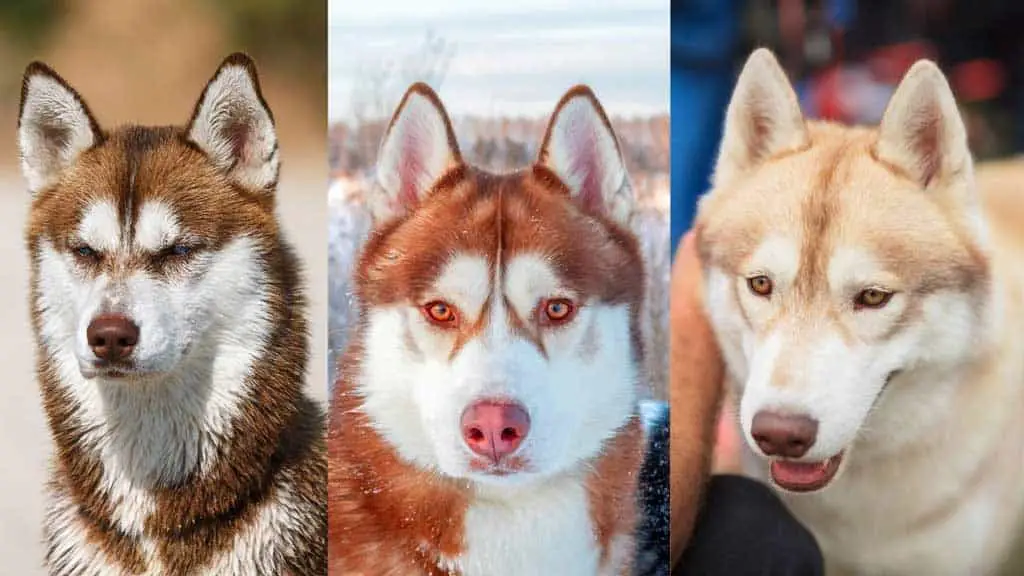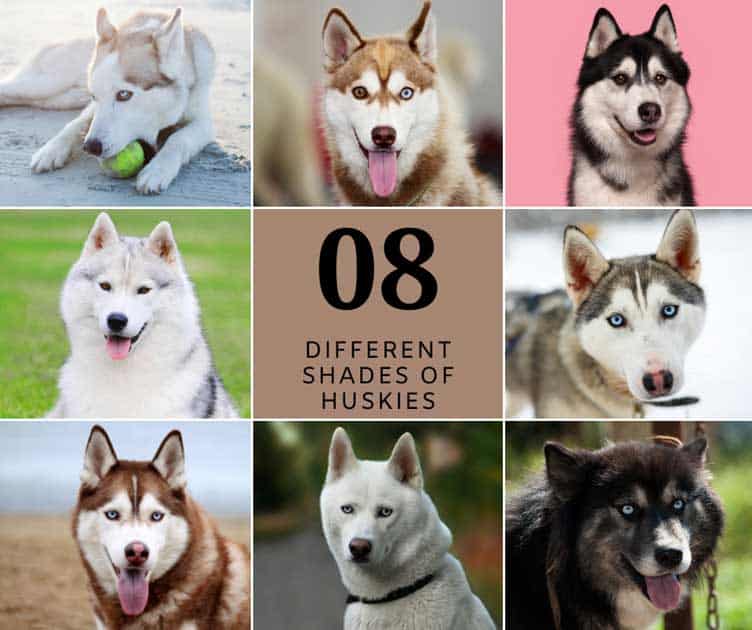
Looking at Instagram feeds that feature huskies, you cannot help but notice that the colors of their coats add to the "aww!" factor or their overall appearance and demeanor.
A Siberian husky's coat can have all colors from pure white to mostly black, with a variety of markings and patterns. In addition to black and white, common colors found on Husky coats include agouti, tan, brown, grey, red, and sable.
Read on as we describe eight most common standard colors there are and learn about some of the rare husky colors that you can find on a Siberian husky.
What Are the Different Colors of Siberian Huskies?
From coats that make them look like a wolf to something softer in tones and hues, you can expect to see Siberian huskies in a wide array of different colors.
According to the American Kennel Club, standard colors of Siberian Huskies include:
The Federation Cynologique Internationale writes that all colors from white to black are found on Siberian huskies. They have a double coat that can grow to medium length without obscuring the outline of your dog. Siberian huskies also have markings on the head, including striking patterns that you can only find in this particular breed of canines.
Siberian huskies have coats with two layers: the topcoat and the undercoat. Their coats can have different colors, such as black, white, gray, brown, red, and cream, or a combination of any of these colors.
Huskies usually have white paws and legs, a wide variety of facial markings and color patterns, white-tipped ears and tails. Which together withNot to mention their striking eyes, which also contributes and make this dog one of the most desirable to own
Black and white is the most common combination of coat colors for Siberian huskies. Copper red and white, as well as grey and white, are also quite common. Agouti-colored coats are rare.
Let’s take a look at these notable coat colors and combinations:
Agouti
While it is common for mammals such as wild rodents to have this color, agouti is rather rare in huskies. It involves a dominant dark mask that can make your dog's face look dirty. The agouti hues can reach down a husky’s entire body. It is caused by the agouti gene and usually gives the dog a wolf-like and wild appearance.
Related article: Are Huskies Related To Wolves?
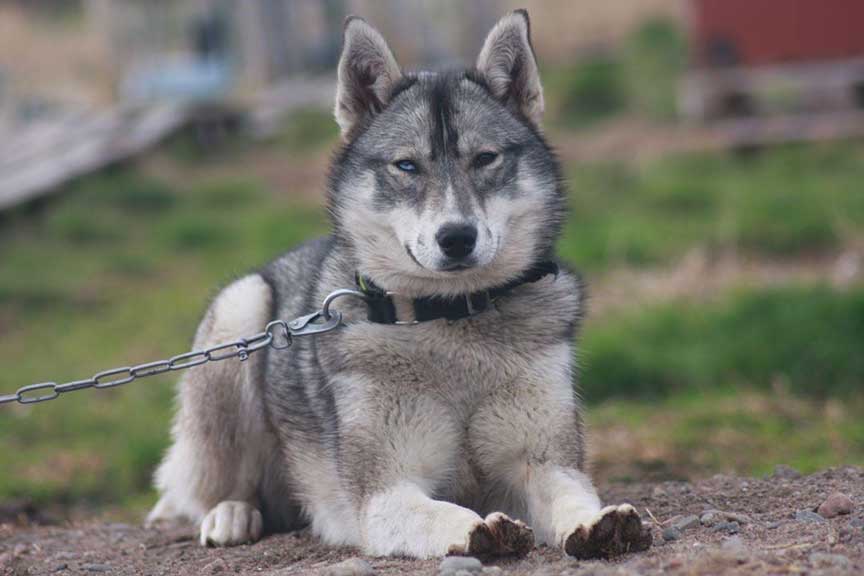
via Instagram: @vesterelva_viddashusky
Agouti is generally grayish in appearance, but it also has a salt and pepper look. Agouti usually has a mixture of tan, gray, red, and black colors.
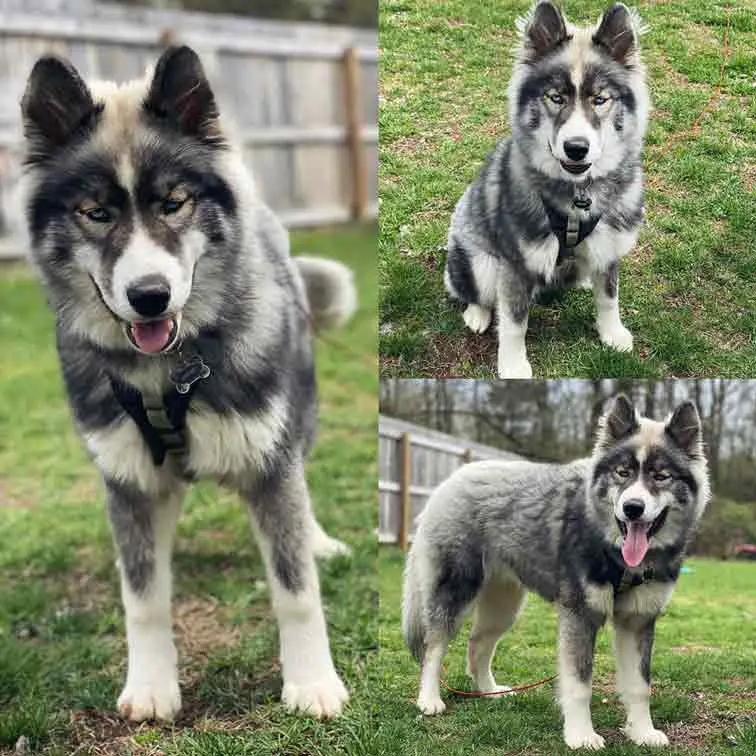
via Instagram: @agouti_logan
Mostly Black
A pure black color of the Siberian Husky is considered rare. The color allows scattering of white patches, mostly on the legs, face, chest, and tip of the tail. To be classified as this color, the dog's body must have a minimum of 75% black. Many huskies that are close to pure black will still have some markings in white. Pigmentation of the nose, lips and eye strokes should be strictly black.
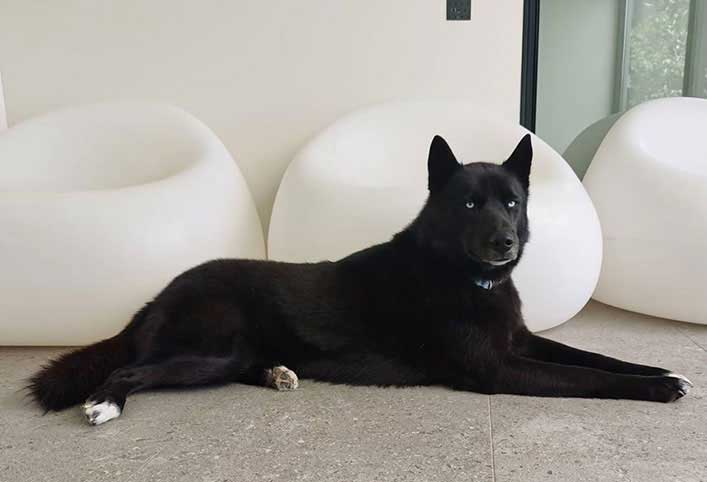
via Instagram: @satoris
Black and White
You can find three shades of black on Siberian Huskies:
- deep jet black
- black
- diluted black
Other huskies have more colors accentuating their black coat. Some have an undercoat of white, beige, or any shade of gray, and there are also some with red hues.
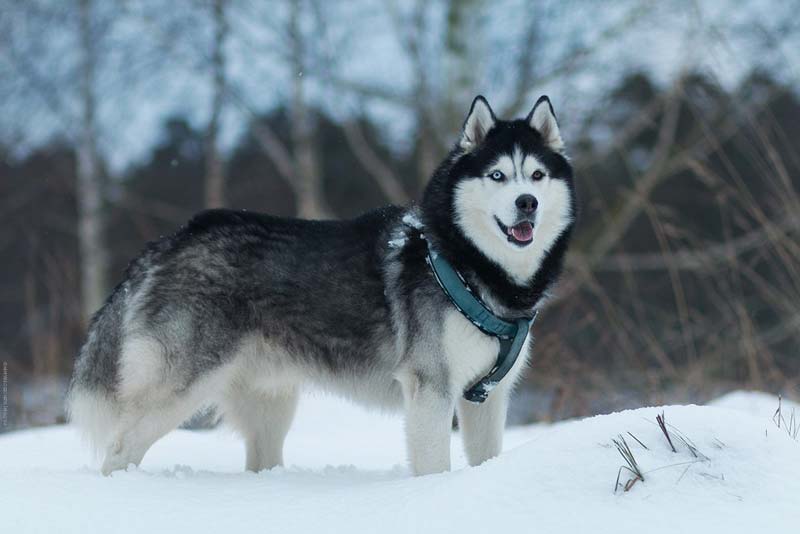
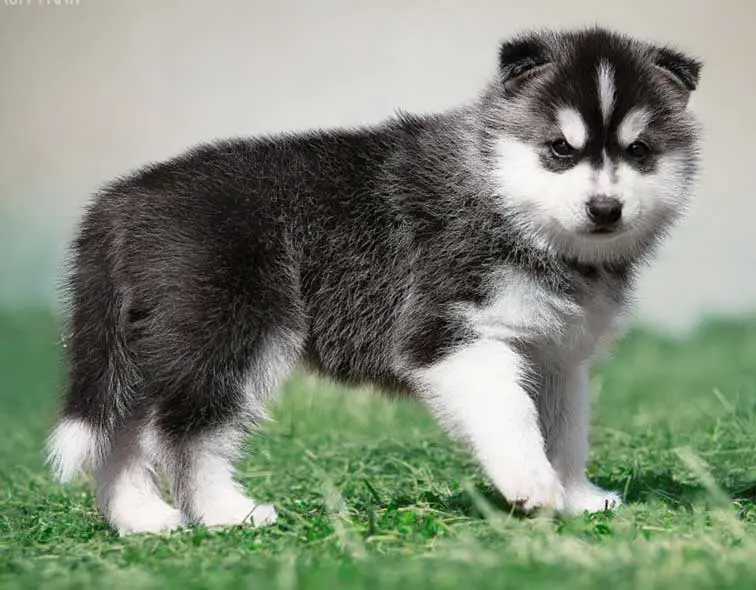
Black, Tan, and White
Black and tan coloring is extremely rare, but it does exist. You’ll usually need to visit a breeder who specializes in this color combination if you want a Husky with this collection of hues.
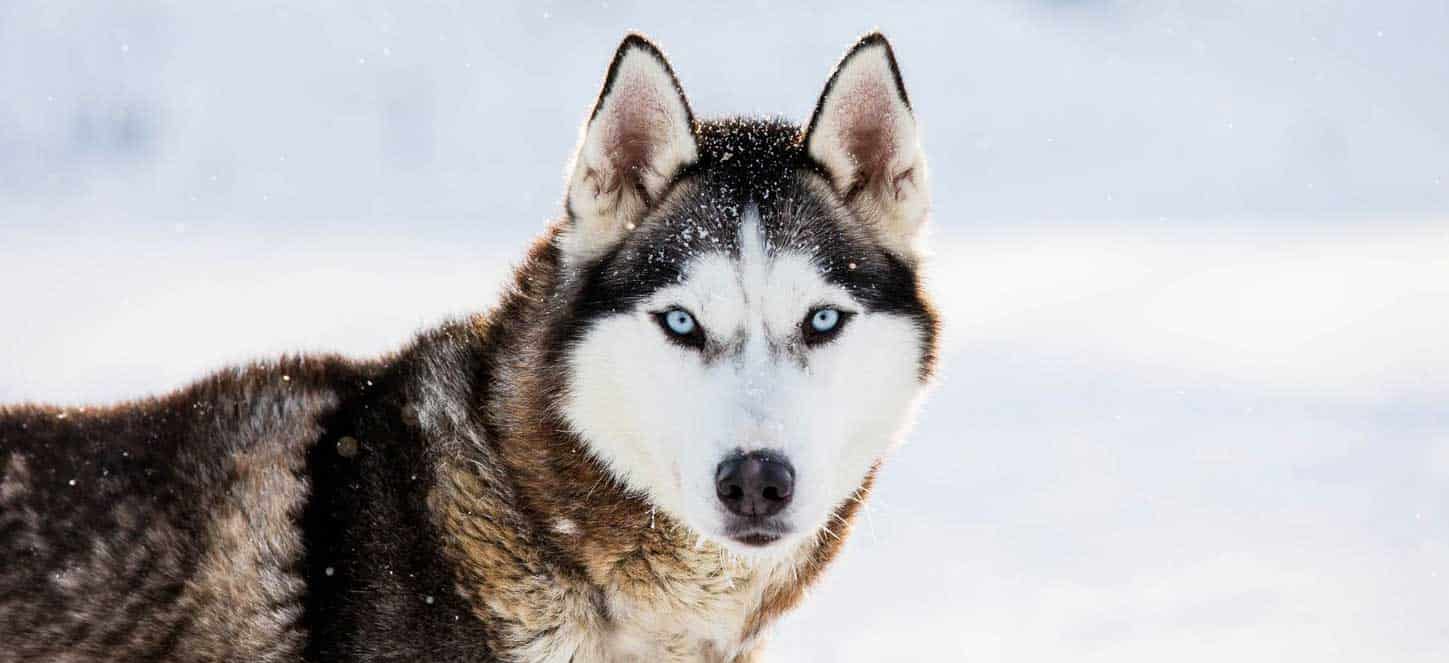
via Instagram: @hellerkantri.huskypark
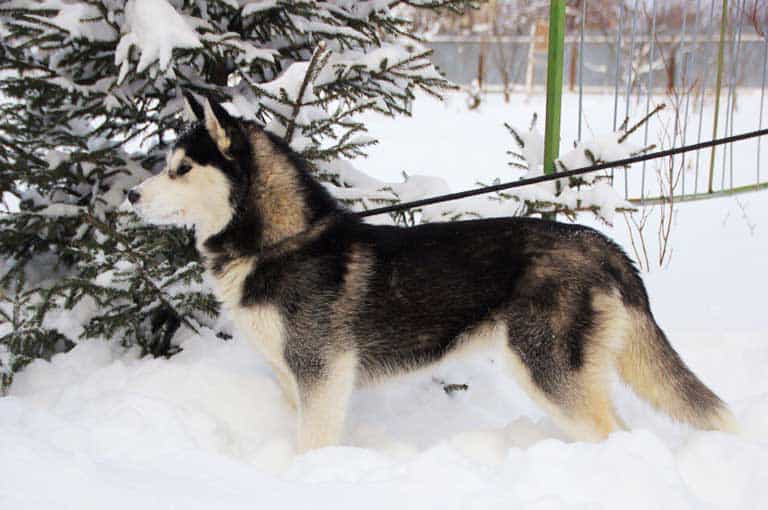
Brown
When you say brown in terms of Siberian husky colors, it can mean two different shades of brown: copper and sable.
Copper
Copper has tinges and shades ranging from yellow to brown. It might be monochromatic or banded, with liver-colored points. The undercoat may be copper, brown, or light red, while creme is also found in banded dogs. Copper may be:
- Chocolate copper, which has a deeper and darker brown color
- Red copper, which has a tone that is more red than yellow
- Orange copper, which is more yellow than red

via Instagram: @hellerkantri.huskypark
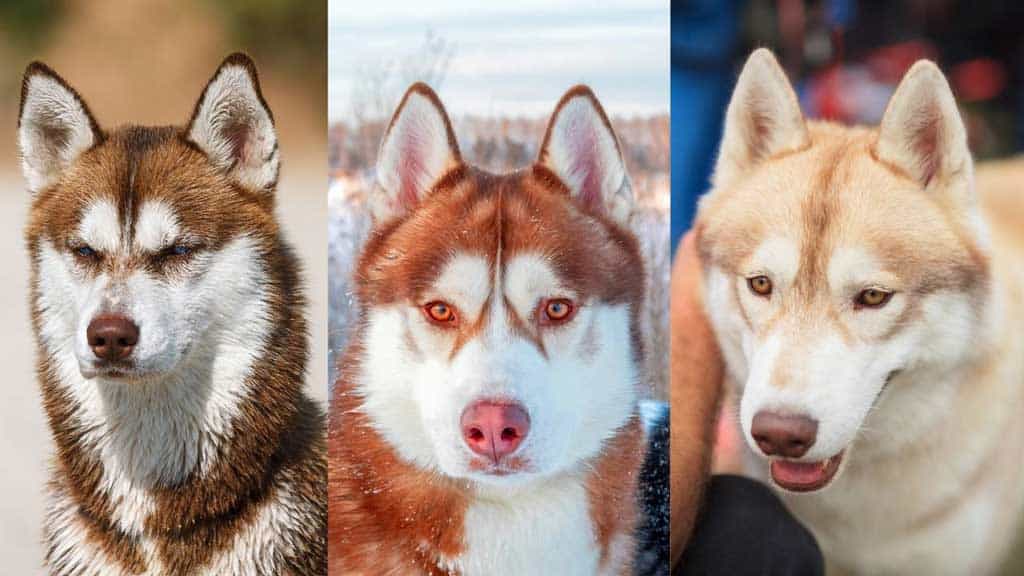
Chocolate (on the left), red (at the center) and yellow (on the right) huskies
Sable
Sable coats in Huskies are always banded and have black points and tips. The undercoat may be orange, chocolate, or red. One difference between this and wolf-gray is that the undercoat is never beige.
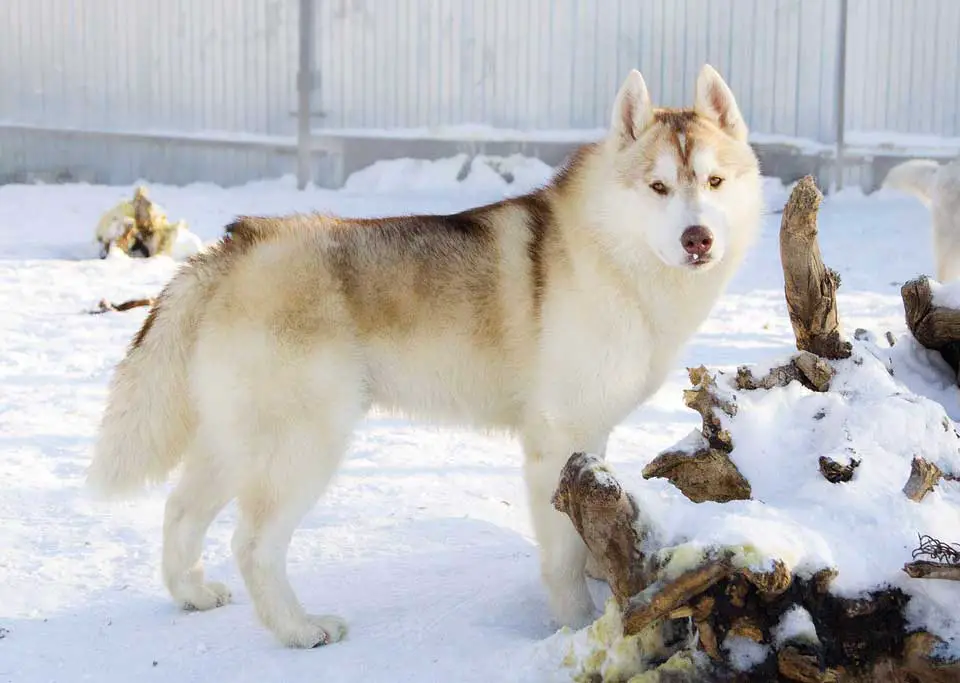
Red and White
Red and white coloration is related to the liver points, or the nose, eye rims, and lips. It's also characterized by the total absence of black hair.
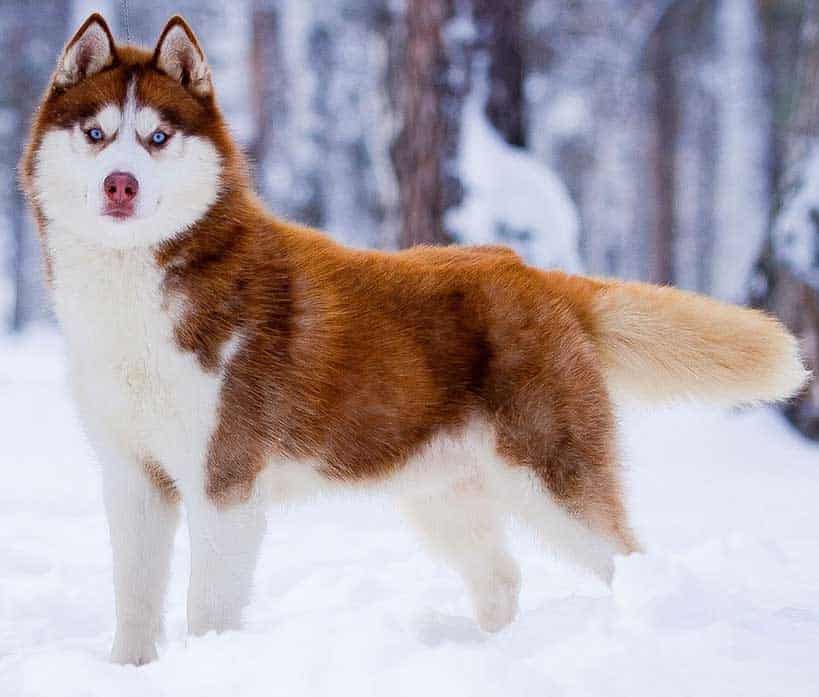
Gray and White
Gray and white Siberian huskies have three possible shades of gray: wolf-gray, silver, and darker shades of gray.
Wolf-gray mixes a warm shade of gray with red, tan, or beige colors around the ears, back, and legs. The gray topcoat mixes very well with the beige undercoat.
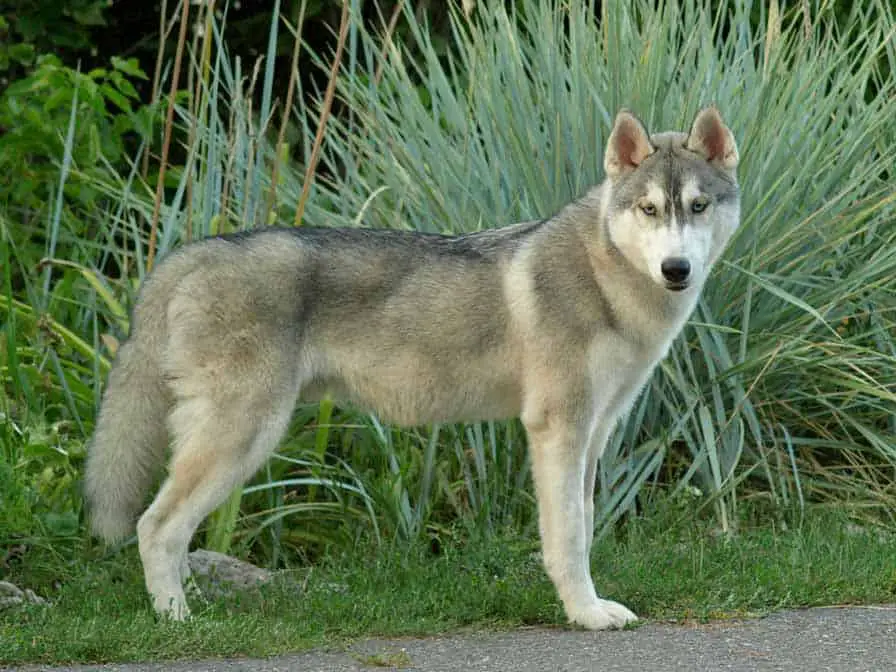
Silver gray is the result of restricting the agouti gene, and you have coats with a tinge of silver or blue, or any of the colder shades, unlike wolf-gray, which has warmer brown to red hues. What's more, silver huskies have white undercoats.
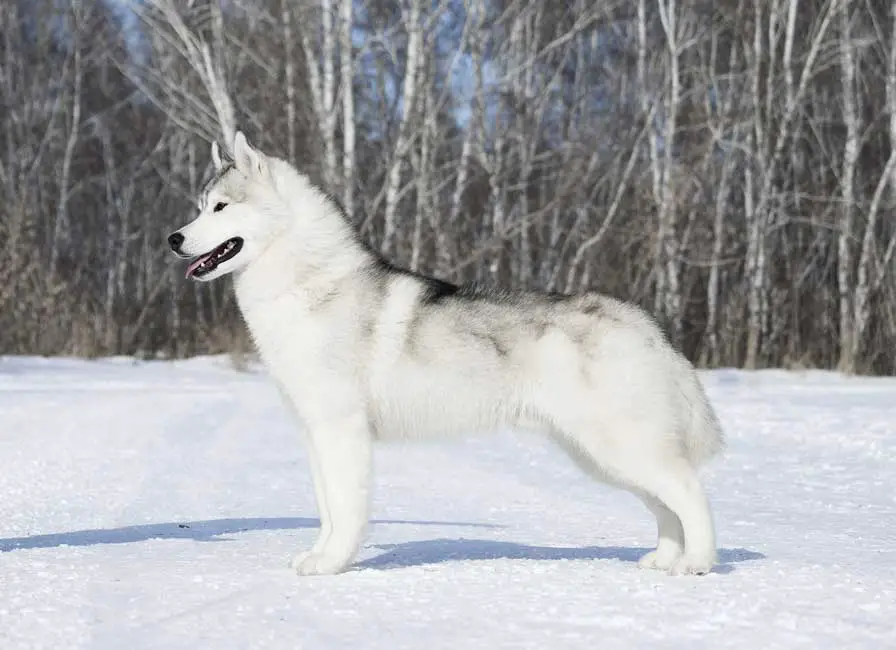
Medium to dark gray, on the other hand, is the most common among gray Siberian huskies. It can have a tinge of warm hues and tones, but it's most muted. The undercoat is a combination of silver and beige.
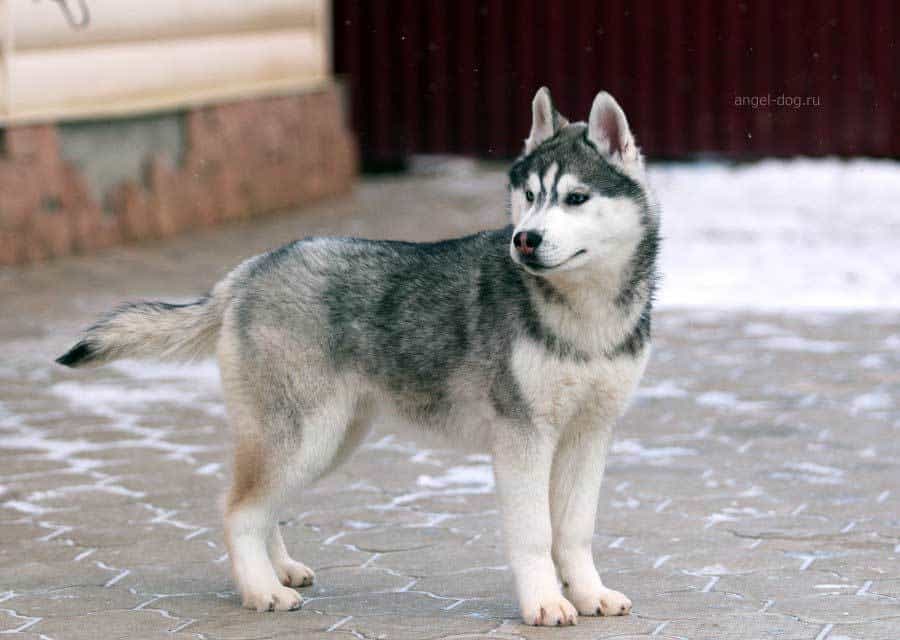
White
While most Siberian huskies have white markings and undercoats, it is very rare to have one that is pure white in color, but it does not indicate albinoism. Having a pure white topcoat and undercoat means that the hues were completely restricted.
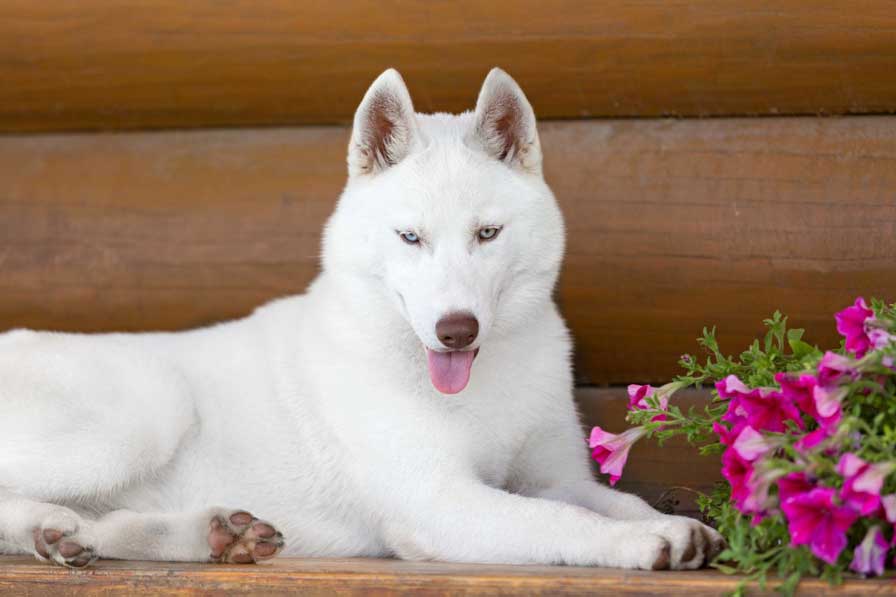
Markings and Patterns
When it comes to markings, black points and piebald are standard. Meanwhile, merle coat patterns are not permitted when breeding Huskies due to the health issues the associated genes can cause.
Pinto patterns are when there is an overabundance of white where other colors should be, especially over the front legs and shoulders.
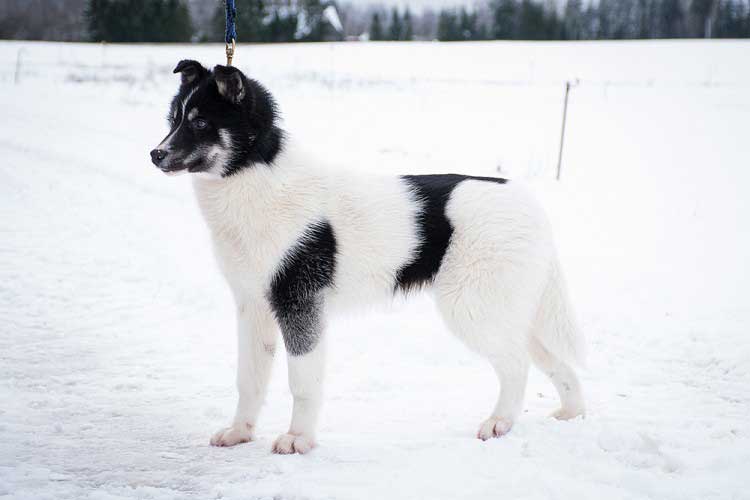
Piebald Siberians will have mostly white fur with some irregular patches of color.
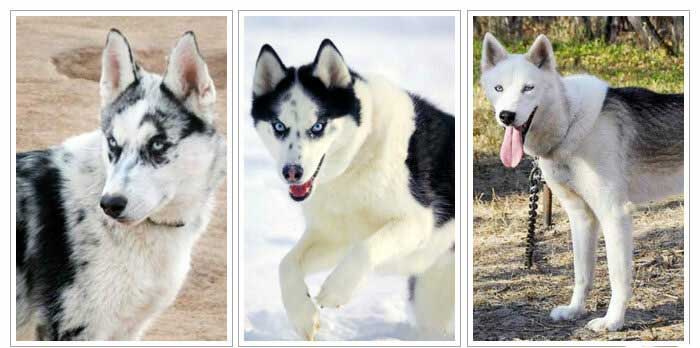
Merle Coat Patterns
Merle is a pattern gene, according to the Siberian Husky Club of America. The presence of this gene alters the base coat color that results in lighter patches. The Merle coat pattern either has a mottled look or a combination of spots or color smears, like on the picture below.
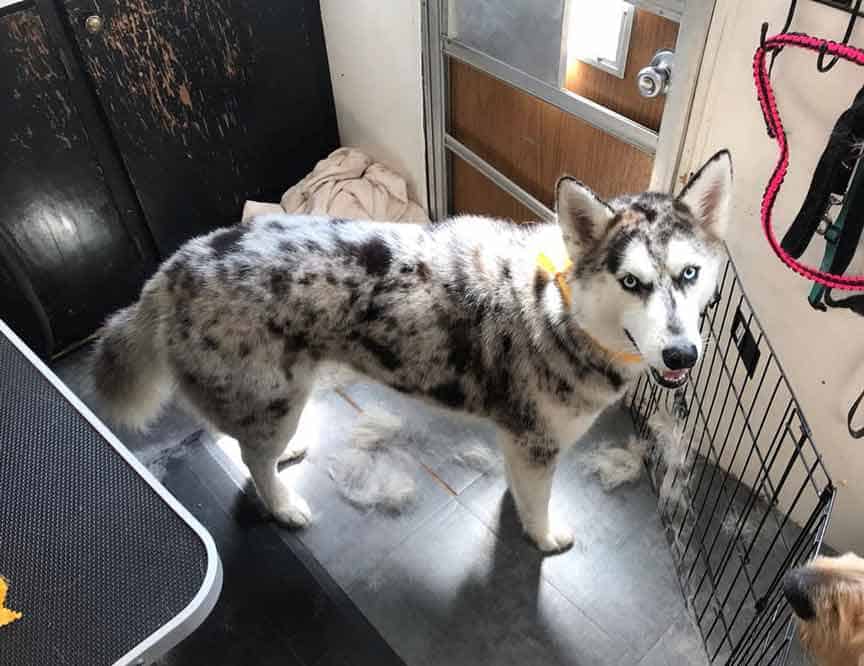
Photo via Instagram by Spatails
The SHCA says that Merle patterns can only come from impure breeding. The main issue with Merle patterns is that they can signify that the dog may have problems with its sight or hearing. The problem becomes more pronounced when two Merle dogs are bred, where there is a one in four chance that there will be a double Merle dog.
Double Merle puppies may be born deaf, blind, or both. Others may have smaller than normal-sized eyes, or they may not have eyes at all. In other double Merle dogs, there would be eccentric pupils, underdeveloped iris, or irregularly shaped pupils. Double Merle dogs may also have other vision-related problems.
Why Are Huskies have Different Coat Colors?
The varied colors you see on huskies are brought about by genetics. Genes can produce a certain color in their coats or restrict the formation of other colors.
These genes are usually denoted by symbols. Here are some examples of genes and their effect on coat colors include:
- Ag, which gives a husky their agouti color
- ach, which restricts red and yellow, giving your dog a silver coat
- ay, which restricts dark colors and produces tan or sable coat colors
- B, which is required for black colors to appear anywhere
- Cc, which results in total albinism
- D, which can intensify coat color or give the dog's coat a full color
- T, which gives the husky a single color throughout
- Ty, which gives your husky a yellowish or sable coat
- Sw, which gives the dog a pure white coat
What is the Best Color for Husky?
Just like the hair on humans, there is no best!
When huskies are responsibly bred, their color is of least importance to good breeder. The same goes for eye color. The AKC Standard states that any color is acceptable, and indeed their color codes for registration cover a broad spectrum of shades.
Any breeder who places more attention on coat color instead of the overall health and wellbeing of the animal might be a sign that they are a backyard breeder or puppy mill and to be avoided.
When selecting a puppy you should be on the lookout for a healthy animal that has passed vet checks and is likely to meet your family's lifestyle.
Can Husky Puppy's Coat change color?
When a husky is born the general coat color is apparent but can change over time. There is no way to predict if, when or how the coat will change color.
Change is often natural and unavoidable. It can happen during shedding, as a topcoat may be different color to the undercoat. Of cource, this is nothing to be concerned about! It is to be expected of any animal that sheds hair. Also exposure to sunlight, or simply the physical growth of the animal.
Why Focus on Siberian Huskies?
When you talk about huskies, two different breeds come to mind: Alaskan and Siberian huskies.
There are noticeable differences such as Alaskan huskies being shorter and more lightweight, as well as differences in temperaments.
However, Alaskan huskies are mixed breeds between Alaskan malamutes and Siberian huskies, and they can have any color. Unlike Siberian huskies, breeding Alaskan huskies is not regulated by organizations such as the American Kennel Club.
Conclusion
Whether you are purchasing a puppy from a breeder or adopting from a rescue organization, Siberian Huskies come in all sorts of colors, markings, and patterns. It isn't something you should be concerned about because color has no indication as to temperament or behavior. Just keep an open mind and take your time selecting a companion that will fit you and your family!
P.S. If you want to make sure your Husky’s coat maintains a healthy sheen, I recommend reading an article on the Best Shampoo for Huskies. Using the right shampoo is essential in keeping your Husky’s coat as beautiful as possible. You can also read Best Brush for Huskies if you’re invested in keeping your pup’s coat maintained at the highest level of quality.


